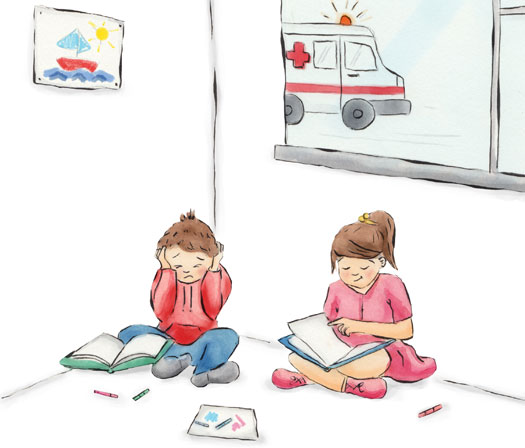Reflexes
THE MORO REFLEX - Integrating the Senses
The Moro, also known as the Startle reflex, is familiar to all parents. It acts like an emotional alarm call to parents when their baby detects a sudden change in their internal and external world that upsets or unnerves them in some way. This reflex does not inhibit as such because as it matures it acts to support our vital fight and flight responses, critical to our ongoing survival. It does though need to settle and harmonise itself.
The Moro Reflex has three branches: visual, tactile / movement and auditory. In the early months after birth an infant will react physically, causing them to cry out if they detect a sudden change in their visual field, their body position or in what they hear. If the person caring for them meets their needs and concerns the Central Nervous System (CNS) learns to trust that this will happen and the baby begins to quell and settle, to relax and ‘let go’. As this occurs the baby uncurls their arms and legs and begins to explore their immediate world via their senses and the wealth of information and feedback this brings them. This is typically seen in the first 3 months of life.
Learning to perceive and receive sensory information from vision, hearing and body movements provides important sensory learning. These three channels feed sensory information into the central nervous system to stimulate and ‘awaken’ the brainstem and to provide direct stimulation to the newer parts of a baby’s brain. This forms the early stages of arousal, attention and preferred learning styles in children.
If for any reason any of these channels are dampened or affected by illness, injury or disease, the child’s sensory processing skills will be impacted and this may have an effect on their learning styles as they grow and develop.

An over active Moro Reflex may lead to:
- Increased or reduced sensitivity to sound, touch and changes in visual field.
- Difficulty processing sensory information: visual, auditory and tactile / movement.
- Breath holding.
- Over attachment due to fear of the unpredictable.
- Dislike of change and an inability to handle the unpredictable.
- Sensitivities in general - leading to allergies, asthma and poor health.
- Sensitivity to food and food textures.
- Hyperactivity and difficulty regulating arousal levels – like needing to be on the move all the time.
- Being distracted by sensory information from the environment because the child cannot filter this information out sufficiently.
- Social difficulties – intolerance of social interactions.
- Rigidity – need to control their play and interactions with others.
- Fear of trying new things.
- Emotional reactivity – tearfulness, loss of temper, frequent tantrums.
Copyright © 2026 | Privacy Policy


